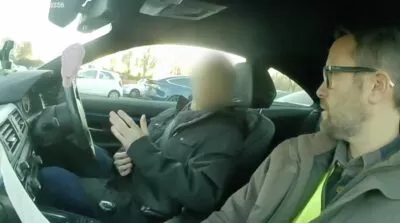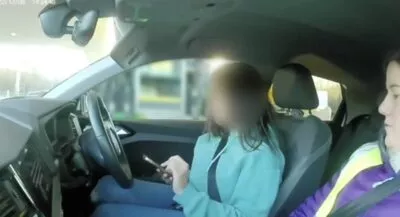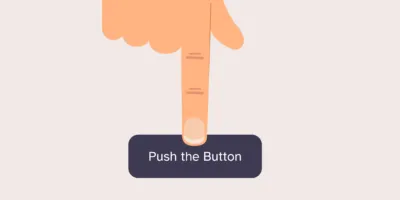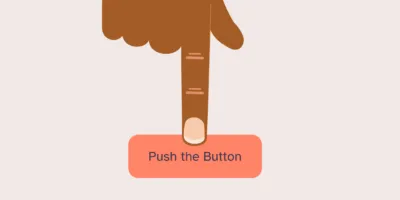06 Mar 2023
The value of getting back “in the field”

Since the pandemic, we have been itching to get out in the field and observe users interacting with services in their intended environment. Luckily for us, we recently had a project that enabled us to do just that.
-
Sam Stevens
Principal UX Consultant
Sam Stevens

Reading time: Approx. 4 minutes
In 2020, all of our worlds were turned upside down… I am pretty sure I don’t need to explain why. The pandemic changed our lives in more ways than we could ever imagine; how we live, work, and socialise with one another – the list goes on.
From a user research perspective, we had to adapt how we practised overnight, as everything switched to remote, and we started work from our kitchen tables. This created a new challenge (or opportunity, depending on how you look at it) to fundamentally rethink how we could stay close to our customers to fully understand their needs when designing products and services.
As we were all now working from home, we switched to remote research by default. We started facilitating research using a mix of video conferencing tools, which allowed us to continue bringing user insight into our projects. Thankfully, there were (and continue to be) lots of benefits to this approach that we started to observe almost immediately;
- We saw people opening up and being more candid because they were speaking with us in an environment where they are most comfortable – their home.
- It seemed to bring us a little bit closer to the users that we were speaking with. We were also at home and experiencing the pandemic too – we were on the same page.
- It allowed us to cast our net far and wide when recruiting research participants. We could easily speak with a diverse and representative group of people in each research study.
However, as a bunch of designers and researchers, we have been itching to get out in the field and observe users interacting with services in their intended environment. Luckily for us, we recently had a project that enabled us to do just that.
Uncovering insights beyond the screen
We wanted to better understand how the context in which users were interacting with an app for their car affected their overall experience of the service. We needed to uncover the pain points they experienced with both the digital and physical touchpoints of the service and where the opportunities for enhancing the experience exist. We did this by carrying out the research by sitting alongside the participants in their cars and walking through the experience (or should I say driving through) where the service is used.
It was particularly relevant to witness how users interact first-hand vs. conducting a remote in-depth interview. There were several external factors that we believed would impact the experience that we wouldn’t be able to fully get to grips with if we were speaking to one another from our kitchen tables!
When planning this research study, we had to overcome a number of logistical and operational challenges. The app was used in a live working environment, and as such, there was quite a lot of “red tape” that we would need to navigate to ensure the research was conducted safely and successfully.

The benefits of contextual research
With the red tape now successfully out of the way, on day one of the study, we were immediately reminded of the richness of getting back out “in the field”. It exposes you to a whole number of extra “layers” that you just don’t get when conducting research through a screen, even more so than we originally anticipated.
Here are some examples of what the extra “layers” enabled us to uncover;
- We could see first-hand both the physical and digital steps in the experience and how the two touch points impacted the user’s understanding of the steps in the experience.
- We got a much clearer understanding of the different external factors that are out of the user’s control and how they impacted their experience. For example, heavy traffic at particular times of the day, the impact of cold weather, varying patience levels of other service users, the setup of physical touch points and so on.
- We witnessed in real-time a variety of different challenges and got an understanding of what users would naturally expect to do in an attempt to overcome the problem they had encountered.
- Lastly, it was a really welcomed experience! We spend such a big part of our lives at work, and it is so important that we enjoy what we do and get to see different experiences.
What confused me was it says you need to pay first, and I was like, I haven’t even used anything yet!
Drawbacks to consider
Like any research technique, there are pros and cons that need to be considered upfront when planning the project to ensure you have every opportunity to uncover representative insight.
Here are some of the learnings that we reflected on as a team at the end of the project;
- We noticed a “comfort blanket” was created being sat next to a researcher during the task. This resulted in participants being less concerned about the increased time it was taking to use the service.
- The participants were given a pre-warning that they would be doing something “new” – this created the sense of a safe space for participants to fail.
- Participants were asked to travel to where we were facilitating the research. It was crucial we understood the impact that this additional commitment would have when establishing a diverse and inclusive recruitment process.
- We know from experience that when stakeholders feel a part of the process, they are generally much more invested in the insights that are uncovered. Enabling stakeholder participation for this type of study needs an extra level of consideration compared to remote in-depth interviews.
The impact of this work
Conducting research in person meant that we uncovered a lot more insights than we were expecting! It also generated a lot of energy and excitement around the client’s organisation about how this methodology forms part of our research toolkit and can enable their teams to get closer to customers.
We built a much clearer picture of what is going on in the “real world”. As we know, the real world is a pretty organic, moving and changing thing, so when designing services, we need to make sure we are consciously considering the impact this has on the user experience, and recognising that a service is never used in isolation.
From my experience just now it was really slow, to be honest – that would put me off using it in the future!
All in all, this has been a really healthy reminder of the value of different research techniques. Moving forward, we are often proposing to work with a “mixed methods” approach – combining different research techniques and sources of insight (eg. usage data vs. insights from humans) to ensure that we have a well-rounded picture of the opportunities and pain points in the service.




